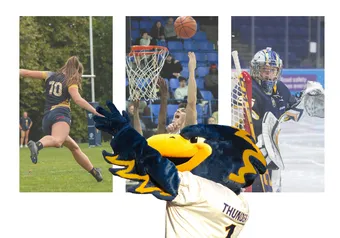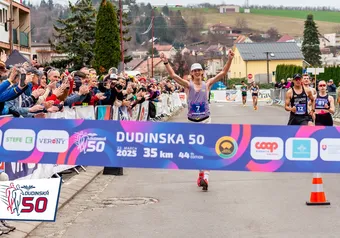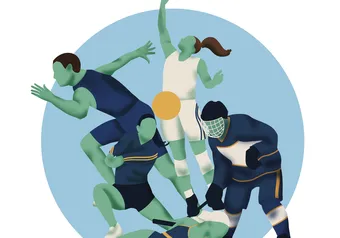UBC women’s soccer head coach Jesse Symons had his first exposure to Hope and Health in 2016, when his squad volunteered at a camp held at Musqueam. The event was packed, with countless volunteers — including members of the Vancouver Whitecaps FC — coming together to coach around 400 kids from various communities.
Immediately, Symons was impressed.
“I was like, ‘holy smokes, this is unbelievable,’” he recalled. “The outreach, the connection, the networking, everything that was a part of it was so positive, and since then, I've really had a deep sort of focus on seeing what that reach can be, and how our UBC players and myself can support the mission of Hope and Health.”
Hope and Health is an Indigenous charity based on Vancouver Island. It started in 2010, when Kw’umut Lelum’s feedback process spotlighted the community’s longing to unite around their children in a positive way.
“Too often the community was being brought together through tragedy, loss and injustice and this pattern of connecting in pain and despair needed to change,” reads the initiative’s website. Hope and Health was born in response to this desire, aiming to inspire Indigenous youth through soccer — a sport loved by the Coast Salish, according to the charity.
Symons, who now also serves as Hope and Health’s technical director and head coach, believes that the program’s emphasis on physical activity is an important way to support Indigenous children.
“I think that by integrating into different communities and creating weekly programming, to allow structure outside physical play and activity creates routines for children who want to continue to do that, because they feel healthy, they feel excited,” he said.
Physical activity is important for every community, but its benefits are especially critical for Indigenous youth, who Hope and Health describes as “the most vulnerable members of Canadian society.”
In comparison to their non-Indigenous counterparts, Indigenous youth are more likely to drop out of high school and experience higher rates of violence and suicide. Sports can be vital in the face of these realities, boosting mental and physical health while providing key opportunities for youth to form friendships, develop social skills and learn persistence.
As Symons puts it, the reasons for UBC’s involvement are “endless,” and the partnership with Hope and Health is “reconciliation in action.”
“I think [it] gives an opportunity to show that there's a reconciliation and impactful focus with the [team] in these communities and in the province to be more action-oriented than just talking about it,” he said.
Under Symons, the women’s team has collaborated with Hope and Health for numerous events and multiple players — both former and current — have joined the program as coaches or coordinators. He believes that it is especially important for the ‘Birds to act as role models in communities that might not otherwise interact with university athletes.
“Young Indigenous kids can look up to our players and know that there's a university future hopefully for them … if they really put their heart and mind to it,” he said.
Just as it benefits Indigenous youth, Hope and Health is also a great learning opportunity for the non-Indigenous volunteers who assist the program. One of those volunteers is Jacqueline Tyrer, a fourth-year defender for the T-Birds who serves as an executive coordinator, mentor and coach for Hope and Health.
“For me, just going to all these different communities and meeting all the children there has really made a huge impact on my life,” she said. “I've definitely learned a lot about the First Nations communities' language and all about their culture.”
“This is one relationship where we both benefit. We get a lot out of coaching these kids but these kids also really enjoy us being there and helping them,” said Tyrer. “I think we're always trying to give back to the community.”
Share this article
First online





